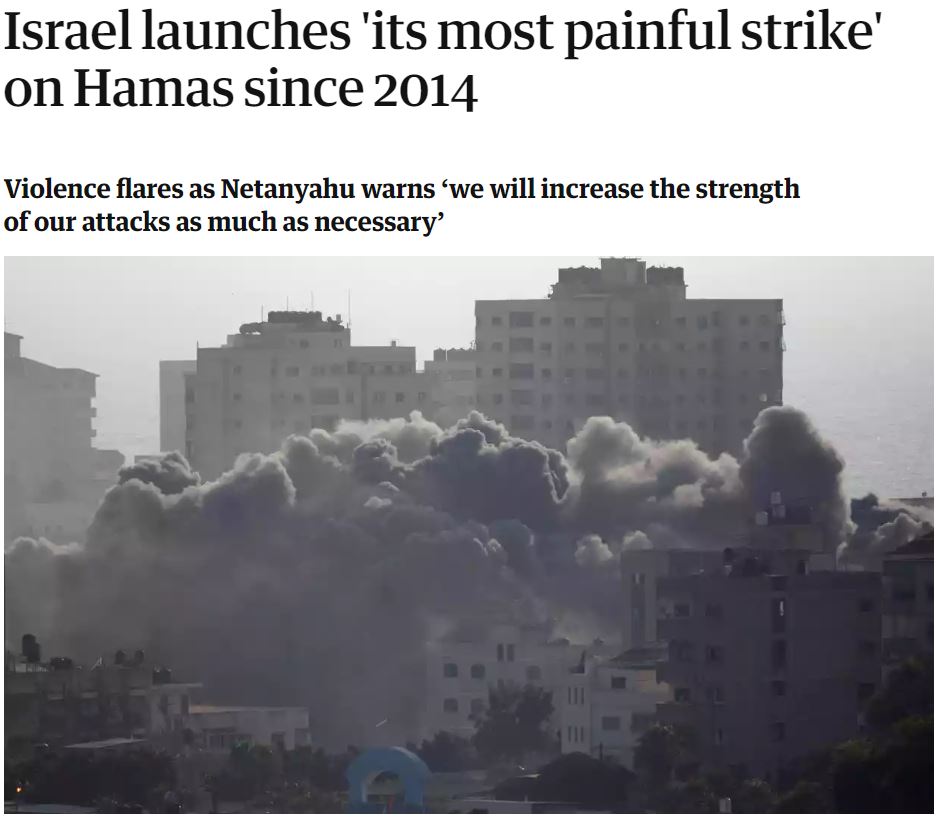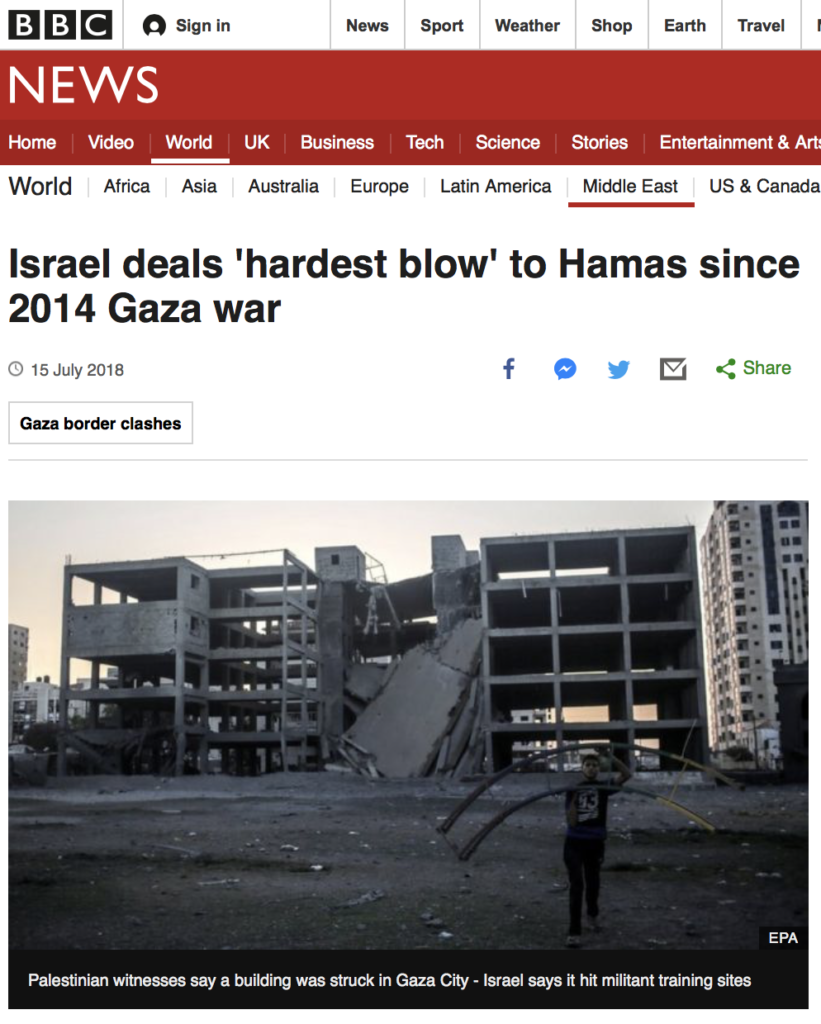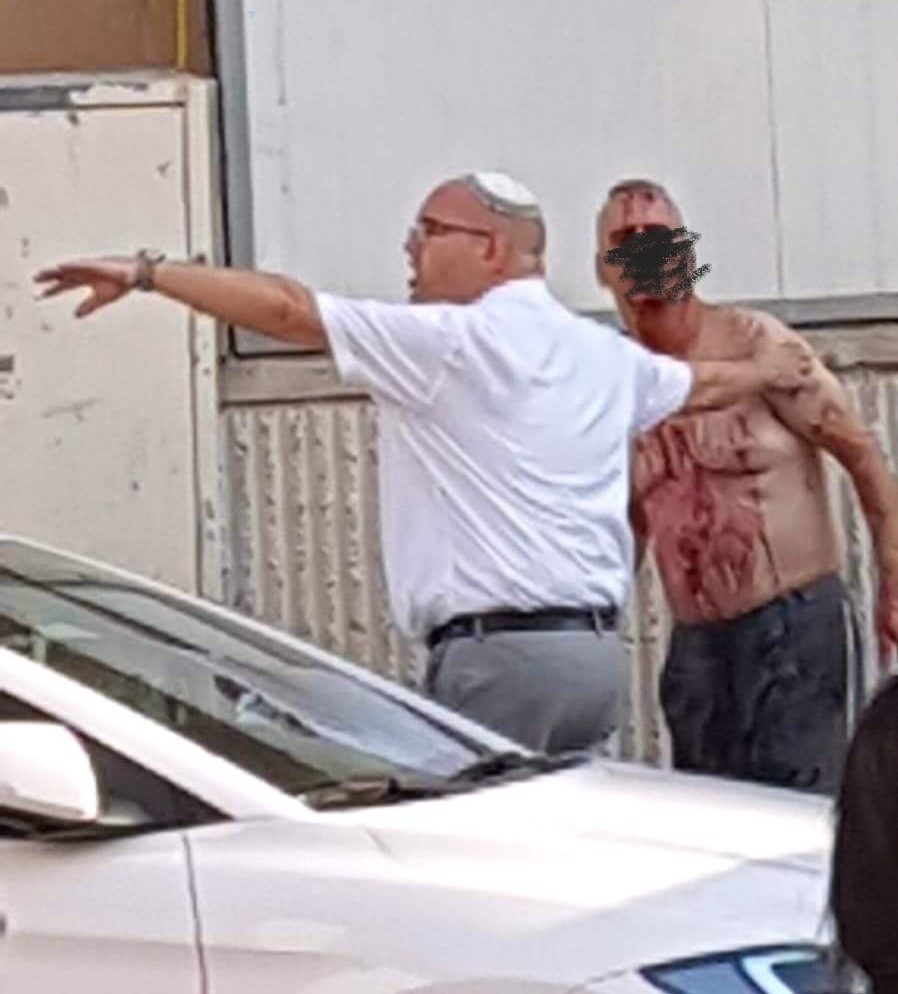Once again, the terror that plagues Israel’s southern communities from the Gaza Strip is rearing its ugly head. And once again, the media is silent in the face of the indiscriminate targeting of Israeli civilians.
This weekend was marked by untenable terror that forced scores of Israeli civilians in bomb shelters. Hamas and its terror affiliates in Gaza fired over 200 rockets and mortars at Israel since late Friday, intent on murdering innocent men, women and children.
A home was hit while an unsuspecting family was in their living room, while a rocket destroyed a children’s playground nearby. At a Sderot synagogue, prayers were cut short as worshippers fled a rocket slamming the area on the Sabbath.
It is perplexing to see how media outlets portray a sick and twisted account of events.

The Telegraph, a highly influential British outlet, published the above headline focusing on Israel’s response to the incessant attack on its civilians. The outlet fails to address the terror rockets that rained upon Israelis prompting this maneuver of self-defense. According to CAMERA’s UK Media Watch, the accompanying photo depicts grieving Palestinians from another unrelated incident.
This immense distortion of reality is part of a greater agenda to withhold sympathy for innocent Israelis who have seconds to run for cover.

UK Media Watch also analyzed The Guardian’s recent coverage of these events. In one instance, The Guardian overrode an Associated Press headline to be more politically charged and less sympathetic to Israeli suffering. “Painful strike” in the final headline conveys Israel as a brutal military force while providing no context to these strikes that were in response to Hamas aggression.

Analyzing BBC coverage of these troubling events, CAMERA’s BBC Watch reported that in one case, only 44 words were dedicated to the terror inflicted on the Israeli side. The analysis concluded that BBC had made clear attempts to focus audiences’ attention on Israeli military actions while minimizing the Palestinian acts of terror that had prompted them.
Agence France Presse (AFP) also failed to provide vital context to readers. On July 15, 2018, CAMERA prompted a correction to AFP, who alleged that rockets were “reportedly fired from the Gaza Strip,” as if the origin of the attacks was not confirmed. Conversely, AFP does not allege that Israeli forces “reportedly” struck targets on the Gaza Strip, instead quite assuredly informing readers of Israel’s actions.
This is not a new phenomenon.
During Israel’s 2014 Operation Protective Edge, coverage magnified Israel’s military actions in Gaza, which were defensive. Coverage generally steered away from sympathy with innocent Israelis and parroted Hamas’ inflated casualty count to portray terrorists as innocent victims.

More recently, during the so-called “Great Return March” on the Gaza-Israel border, mainstream coverage of the events have failed to detail the extent of terrorist involvement. The media is guilty of labeling terrorists attempting to breach a sovereign border and murder innocent Israelis as “protestors,” and citing a high “protestor” casualty count.
CAMERA notes that a majority of the Palestinians killed during the “Great Return March” were linked to terrorist groups, according to an April 26, 2018 report by The Meir Amit Intelligence and Terrorism Information Center (ITIC).
Shelled homes, playgrounds, kindergartens and synagogues are apparently not quite as newsworthy as Israel’s “bombardment” of the forces that aim incessantly to kill its civilians.
Contributed by CAMERA intern Joshua Gannon.

